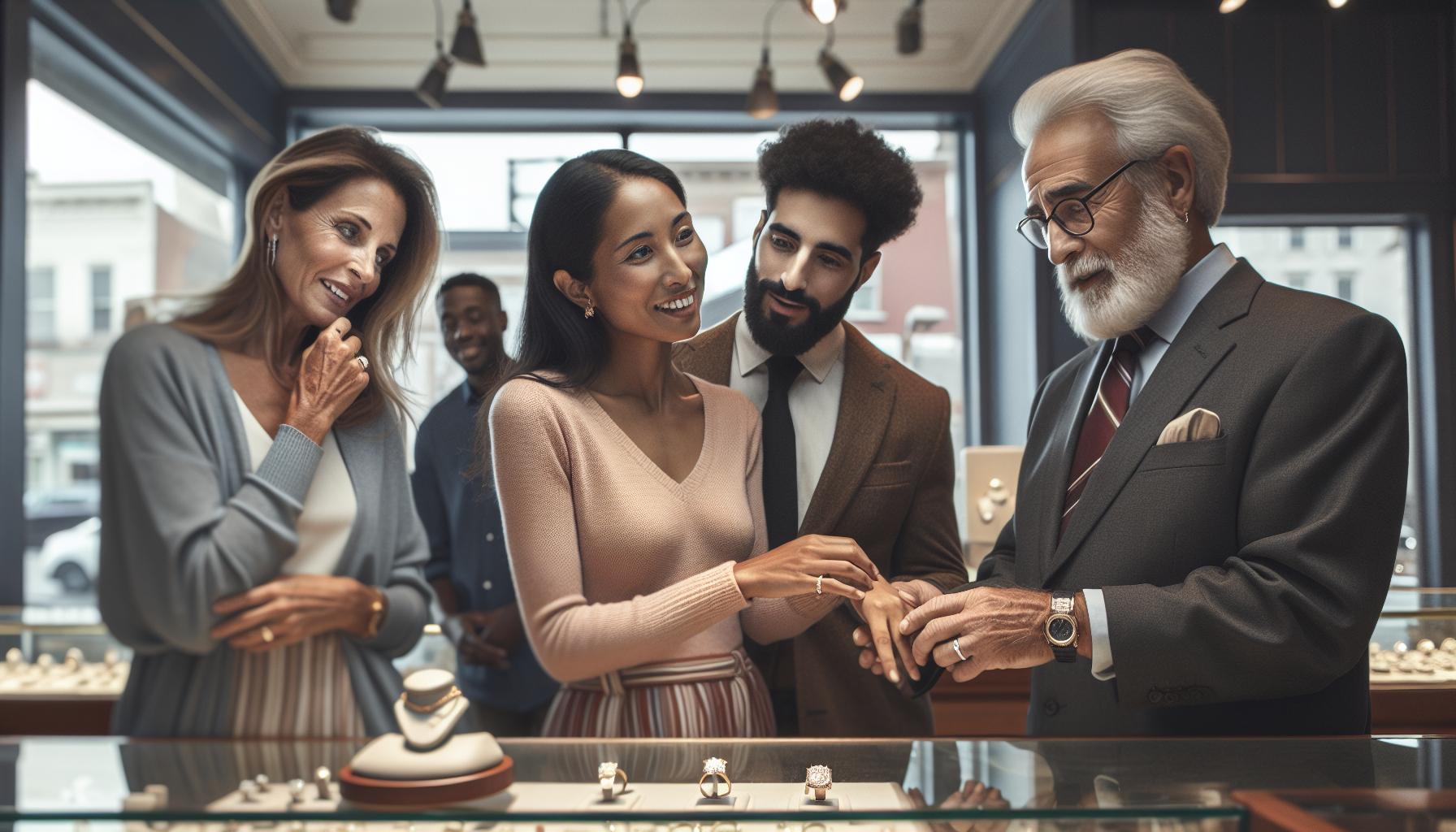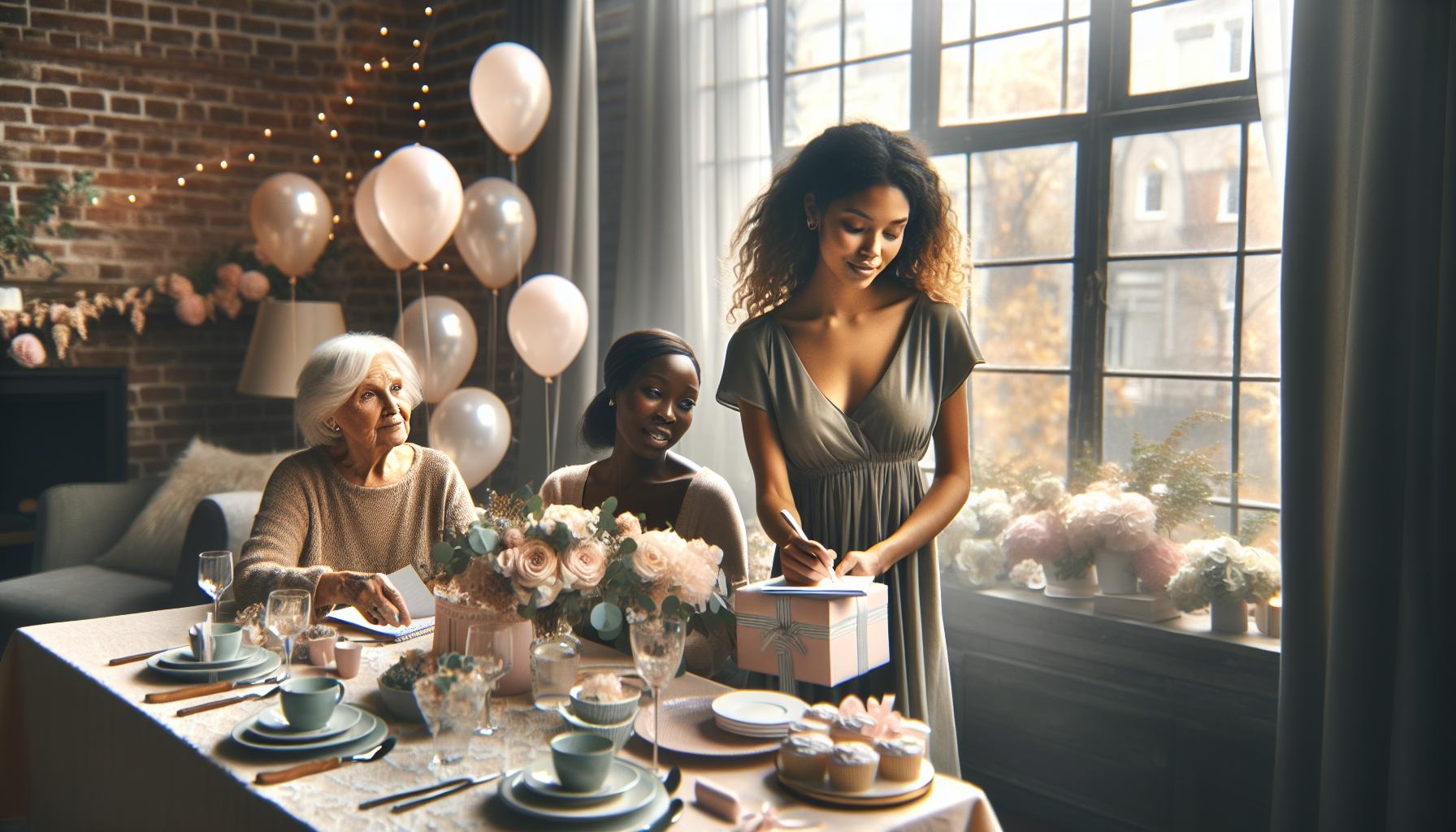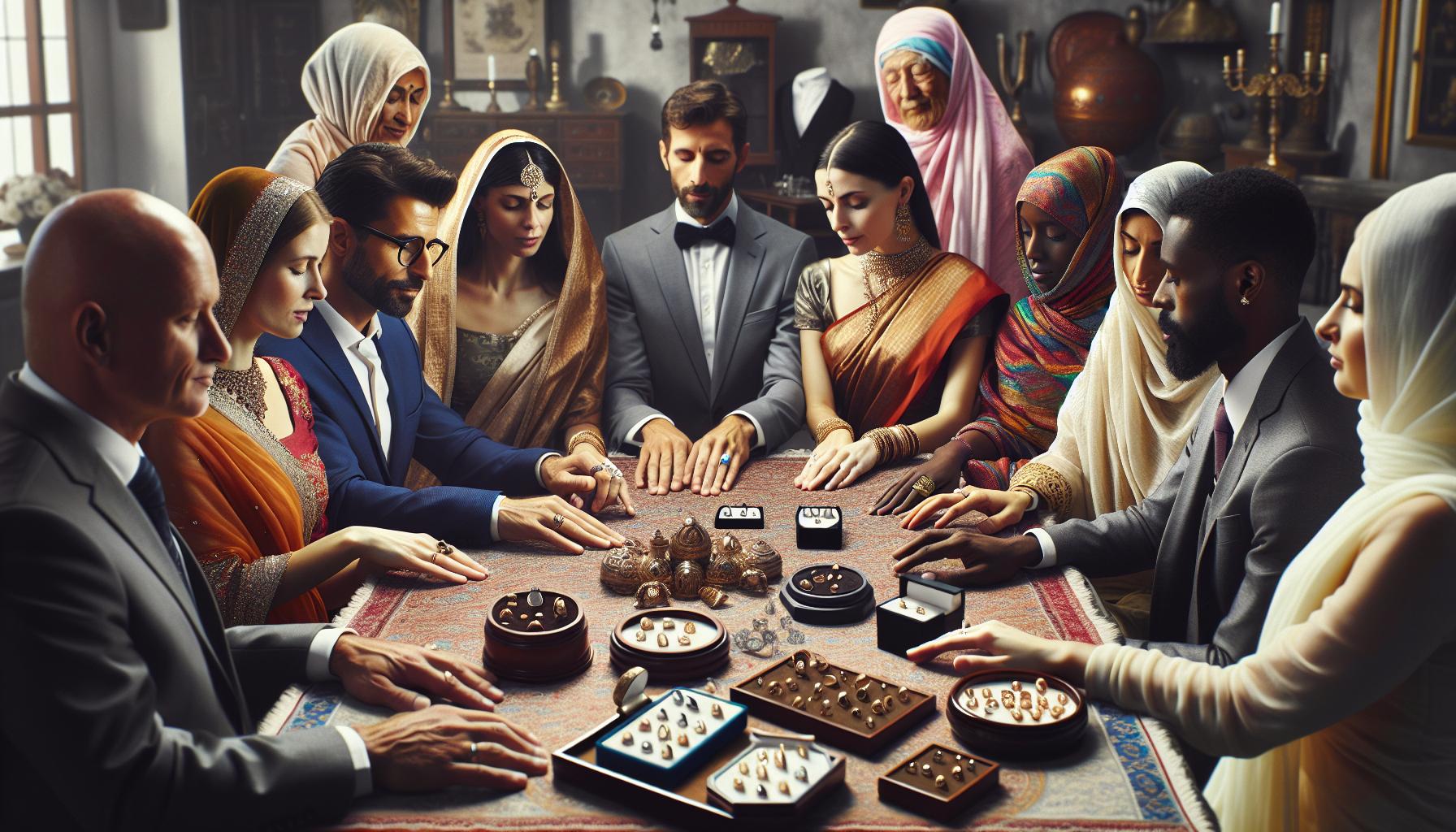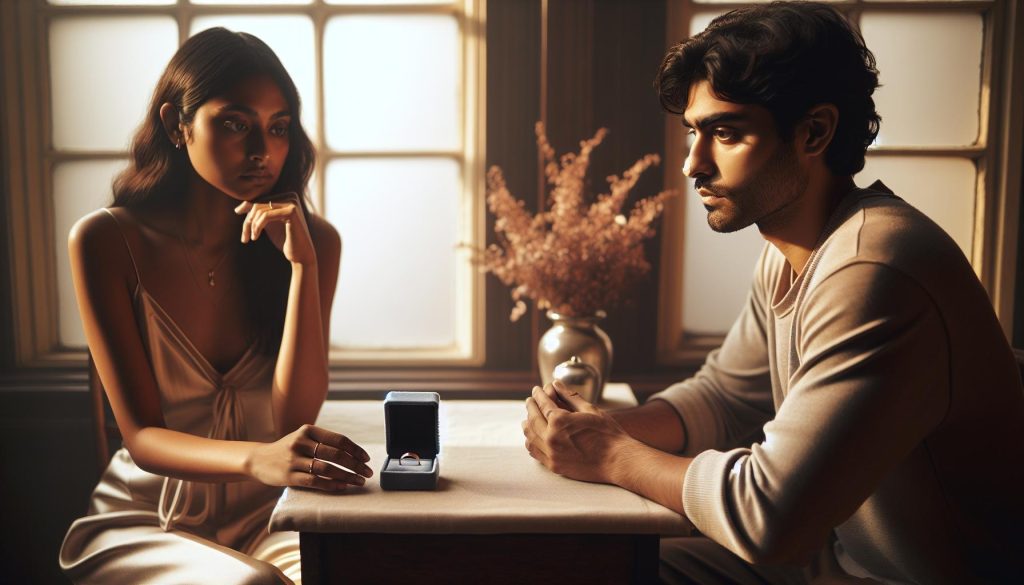When it comes to wedding planning, few questions spark as much debate as “Who buys the wedding bands?” This seemingly simple inquiry touches on timeless traditions and modern practices, reflecting how roles and relationships have evolved. Understanding who traditionally shoulders this responsibility can help streamline decision-making and reduce the inherent stress of wedding preparations. Whether you’re a couple navigating expectations from family and friends or simply eager to honor your unique love story, this discussion will illuminate your choices. Unraveling the nuances of purchasing wedding bands not only enriches your planning journey but also fosters meaningful conversations about commitment and partnership. Dive into the blend of tradition and modernity in this essential aspect of your wedding!
Understanding the Tradition of Wedding Bands
The tradition of wedding bands is steeped in history, symbolizing not just love and commitment but also a promise that transcends time. With roots that trace back to ancient Egypt, wedding rings were once believed to carry magical qualities, representing eternity through their circular shape. Today, these bands continue to carry such significance, albeit with evolving meanings that adapt to cultural contexts and personal beliefs. As couples embark on their wedding journey, understanding the importance of their choice in wedding bands can enhance the sentiment attached to their union.
When selecting wedding bands, it’s essential to recognize that the act itself is a ceremony of sorts. Couples may choose to honor traditional practices, such as the groom purchasing the bride’s ring, but modern perspectives increasingly allow couples to participate in the process together. This collaborative approach acknowledges the bond they share, making the act of choosing rings a shared experience that reflects their partnership and mutual commitment.
The variety in wedding band styles-ranging from classic gold to intricately designed artisan pieces-demonstrates the importance of individual expression within this sacred tradition. Many couples today opt for designs that reflect not only their unique aesthetics but also their values, such as ethical sourcing of materials or support for local artisans. This personal touch transforms what was once a rigidly defined tradition into a vibrant celebration of love and individuality.
Ultimately, navigating the realm of wedding bands is a journey filled with excitement and meaning. As couples explore their options, they are crafting their own stories, blending tradition with contemporary insights. In doing so, they reaffirm their connection to a long-standing custom while making it uniquely their own, symbolizing a love that is both enduring and personal.
Modern Perspective: Who Really Buys the Rings?

The age-old practice of purchasing wedding rings has evolved significantly over the years, transforming from a tradition steeped in antiquity to a modern ritual reflective of personal values and partnership. Traditionally, it was commonplace for the groom to select and buy the bride’s ring, serving as a symbol of his commitment and financial stability. However, in our contemporary society, this practice has shifted toward inclusiveness and shared decision-making, embodying the essence of partnership at its core.
More couples now recognize the value of making the ring selection a joint adventure, blending their tastes and personalities into the final choice. This collaborative approach not only strengthens their bond but also enhances the sentiment attached to the rings, which are often seen as tangible representations of their love story. Couples discuss preferences, budget considerations, and their unique styles, leading to rings that resonate with both participants. This shift democratizes the process, ensuring both partners feel a sense of ownership and connection to these significant tokens of their commitment.
In addition to traditional purchases, many engaged couples are exploring alternative avenues for acquiring wedding bands. From custom designs crafted by local artisans to ethically sourced materials, practicality and sustainability have become vital aspects influencing modern decisions. This aligns with a broader trend where values shape purchases, reflecting the couple’s personal beliefs and making the rings a manifestation of their journey together. Furthermore, a growing number of couples are opting for non-traditional options such as silicone bands or alternative materials like wood, broadening the spectrum of choices available.
Ultimately, the question of who buys the wedding rings no longer has a one-size-fits-all answer. Embracing this spectrum of choice allows couples to carve their own niche within the heritage of wedding customs. As they navigate the delight and intricacies of wedding planning, understanding this shift not only enriches their selection process but also adds layers of meaning to their union, making the rings truly representative of their unique love story.
Gender Roles and Wedding Band Purchases

Amidst the joyous whirlwind of wedding planning, the dialogue surrounding who purchases wedding bands offers a profound glimpse into evolving gender roles and shared responsibilities in modern relationships. Traditionally, the weight of this task fell squarely on the shoulders of the groom, who would select and pay for the bride’s ring as a reflection of his devotion and financial capability. This customary practice often reinforced clear gender binaries, positioning men as the primary decision-makers and financial providers in the marriage dynamic.
As societal norms have shifted, so too have the dynamics surrounding wedding band purchases. Many couples today embrace a more egalitarian approach, viewing the selection of wedding rings as a significant milestone to share. This collaborative effort not only symbolizes a partnership but also reflects the unique identities and styles of both individuals. Couples might engage in heartfelt discussions about personal preferences, budget constraints, and design choices, fostering a deeper emotional connection to their rings. This shift not only democratizes the buying process but also enriches the significance of the rings, turning them into meaningful tokens that narrate their love story.
In celebrating this transformation, it’s essential to acknowledge the diverse ways couples approach the task, particularly if traditional roles were deeply ingrained in their upbringing. Here are a few modern practices to consider:
- Joint Purchases: Many today choose to make the purchase together, splitting the costs to reflect their shared commitment and partnership.
- Individual Selection: Some couples prefer that each partner select their ring independently, allowing for personal expression while still considering overall cohesion in style.
- Family Contributions: In certain families, it’s traditional for parents or siblings to contribute toward ring purchases, necessitating discussions that blend modern and traditional financial practices.
This progression not only highlights but also enhances the significance of the rings as symbols of love and unity. By navigating these new norms, couples can navigate expectations and preferences while creating a celebration that is truly reflective of their unique journey, ensuring that each ring tells their story in its own beautiful way.
Cultural Variations in Buying Wedding Rings

Purchasing wedding bands is not only a significant personal choice but also a process deeply embedded in cultural traditions that vary widely across the globe. Understanding these cultural nuances enriches the experience and helps couples navigate their own journey in selecting their symbols of commitment. For many cultures, these rings hold not just monetary value but deep-rooted significance and customs that have been passed down through generations.
In various cultures, the practice of buying wedding rings can differ widely. For instance, in some Asian cultures, it’s common for both the bride and groom to wear matching wedding bands as a sign of equality in the marriage, while in others, the groom’s family may bear the financial burden of purchasing the bride’s ring as a symbol of his commitment to provide for her. In Middle Eastern traditions, wedding bands are often exchanged during the wedding ceremony, but the couple may opt for simpler designs as an expression of authenticity and humility rather than extravagant displays of wealth.
Making it Personal
As couples weave their own narratives, they often draw inspiration from these cultural practices, tailoring them to suit their modern lives while recognizing the significance of heritage. This blending of old and new can manifest in numerous ways:
- Choosing Family Heirlooms: Many couples honor their lineage by using rings that belong to family members, which fosters a sense of continuity and connection with past generations.
- Custom Designs: Inspired by specific cultural motifs or symbols, couples may opt for unique designs that reflect their backgrounds, thus personalizing their wedding bands to resonate with their shared story.
- Incorporating Multi-Cultural Elements: For couples from different cultural backgrounds, selecting rings that incorporate symbols or designs from each tradition can be a beautiful representation of their union.
Embracing these cultural variations and practices not only enhances the experience of choosing wedding bands but also deepens the meaning behind them. Couples are encouraged to reflect on their backgrounds, values, and shared experiences, making decisions that are not only about aesthetics but also about storytelling and heritage as they embark on this joyous journey together.
The Impact of Budget on Ring Purchases
Finding the perfect wedding band is an exciting journey, but it often comes with the reality of budget constraints. Couples must navigate their desires for stunning pieces while remaining within financial limits, making it essential to strike a balance between dreams and practicality. The significant emotional weight behind wedding bands as symbols of love and commitment further complicates this decision-making process, prompting couples to think carefully about what this quintessential piece of jewelry means to them.
Many couples may wonder, “How much should we spend on wedding bands?” A common guideline suggests spending one to three months’ salary on a ring; however, this rule can be subjective and often leads to unnecessary pressure. It’s beneficial to begin by assessing your overall wedding budget and determining a specific allocation for rings. A helpful approach is to prioritize what features and materials matter most to you, whether it’s all-gold bands, diamond accents, or custom engravings that detail your love story.
Transparent Budgeting and Open Communication
Open discussions about finances are crucial in ensuring that both partners feel comfortable with the spending limit. Here are some practical tips:
- Set a Clear Limit: Together, agree on a comfortable price range that aligns with your current financial situation, taking into account other wedding expenses.
- Explore Different Retailers: Take the time to research various jewelers and online stores. Many offer diverse price points and various styles, which can help you find exquisite designs that fit your budget.
- Consider Alternatives: If traditional gold or diamond rings feel out of reach, explore alternatives like lab-created stones, unique materials such as titanium or wood, or lesser-known gemstone options that can offer beauty at a lower price.
Embracing budget realities doesn’t strip the joy from choosing rings; instead, it enhances the opportunity to make thoughtful, intentional choices that reflect your unique love story. Celebrate your commitment with rings that not only align with your designs and emotions but also honor your financial well-being. Love isn’t measured by the price tag of a ring but by the meaningful bond it signifies, making every choice in the wedding planning journey a reflection of that cherished connection.
Navigating Expectations: Family Influence on Buying
When embarking on the journey of selecting wedding bands, couples often find themselves faced with an array of expectations, particularly from family members. This influence can come from long-standing traditions or the opinions of parents and relatives, making it crucial to navigate these expectations with thoughtful consideration. While it can be comforting to lean on familial wisdom, the desire for personal expression and mutual agreement between partners should remain at the forefront of the decision-making process.
Family traditions regarding wedding rings often carry significant weight. Many families have passed down rings through generations, bestowing upon them a sense of heritage and sentimental value. In some cultures, it’s customary for parents to contribute towards or even purchase the wedding bands, while in others, the responsibility lies solely with the couple. Couples should feel empowered to discuss these traditions openly, evaluating how they align with their own preferences. For example, if one partner’s family has a tradition of diamond-studded bands while the other prefers minimalist designs, a compromise or an entirely new choice could blend both backgrounds in a more personalized manner.
Communication becomes key when discussing family expectations. Consider setting aside time to share your vision with your families, explaining why certain styles resonate with you or how you want to honor traditions while infusing your individuality into the selection. This transparency not only alleviates misunderstandings but can also lead to deeper connections with your families as they see the thoughtfulness behind your choices. Ultimately, the right balance lies in honoring your own tastes while respectfully recognizing the influence of family heritage.
As you navigate this landscape, remember to prioritize what feels right for you as a couple. Gather ideas and inspiration, perhaps by visiting jewelers together or exploring online boutiques. Utilize this journey as an opportunity to strengthen your bond, conveying that the rings are not only symbols of your union but also unique representations of your evolving love story. By acknowledging family influence while confidently carving your own path, you can celebrate both tradition and modern love in a way that feels authentic to you.
When Tradition Meets Personal Preference
Deciding on wedding bands is a unique opportunity for couples to blend cherished traditions with their distinct preferences. As you embark on this journey, it’s not just about selecting rings; it’s about creating symbols that beautifully represent your love, commitment, and shared values. Tradition often dictates who purchases the rings, but the modern love story invites couples to take a collaborative approach, ensuring the rings capture both heritage and personal significance.
One effective way to balance tradition and personal preference is through open dialogue between partners. Discuss what each of you values most in a ring: Is it the stone, the setting, or perhaps the metal? For instance, one might feel deeply connected to a familial heirloom or a traditional design, while the other may lean towards a more contemporary, bespoke creation. By sharing these perspectives, couples can identify themes or elements from both sides that resonate, crafting a ring selection process that’s rich with meaning.
Furthermore, consider setting aside specific time to include your families in the conversation. This can enhance the experience by honoring family traditions while making space for your unique vision. Whether you decide to incorporate a family gem into a modern setting or create matching bands that make a statement, keeping your loved ones involved can deepen those familial connections. This melding of paths not only creates rings that embody both tradition and individuality but also strengthens the ties that link your two families together.
Ultimately, this is a celebration of what it means for you both to unite as partners. Focus on styles and materials that reflect both personalities and love stories. Be it intricately designed bands with personal engravings or sleek, minimalist options-each decision can serve as a testament to your journey together. In navigating this fusion of tradition and personal preference, you embark on the exciting chapter of crafting not just rings but lasting legacies that symbolize your union for years to come.
The Role of Couples in Modern Ring Selection
Selecting wedding bands can be one of the most intimate and personal experiences of wedding planning. In today’s evolving landscape, couples are increasingly taking an active role in the choice of their wedding rings, moving away from traditional norms regarding who makes this significant purchase. It’s a beautiful testament to a partnership that embraces equality, shared values, and mutual respect. Couples are no longer just passive recipients of rings; they are collaborators in curating symbols of their love and commitment.
One of the most significant shifts in ring selection is the open dialogue that modern couples engage in. Instead of adhering to the age-old customs where one partner predominantly decides on the ring, couples now discuss their preferences together to find a style that reflects both of their personalities. This collaborative approach allows them to explore various elements-like gemstones, setting styles, and metal types-before making a final decision. For instance, one partner may dream of a classic diamond solitaire, while the other may prefer the vibrancy of colored gemstones. Discussing these desires not only informs the selection but also strengthens their bond through the shared journey of creating something uniquely theirs.
Respecting each partner’s preferences fosters a sense of partnership in the decision-making process. Couples often use this opportunity to create a narrative that blends their individual histories, such as incorporating heirloom stones or choosing custom designs that tell their story. This kind of conscious selection reflects a modern understanding that wedding bands are not merely accessories but powerful reminders of love, commitment, and shared dreams. By including personal anecdotes, aspirations, or even their love languages during discussions, couples can create rings that resonate with deeper significance.
Additionally, the role of family cannot be overlooked. While modern couples take charge of ring selection, they may wish to engage family members in a way that honors traditions or familial sentiments. When considering designs for wedding bands, they might ask a parent about their own engagement ring stories or even seek advice on materials. This inclusive approach enables couples to weave generational wisdom into their choices, enriching their rings with family heritage while also expressing their identities as a couple.
As couples navigate this journey together, each decision-from the design and material of the bands to affirming the significance of the rings in their lives-paves the way to a collaborative celebration of love. As you embark on your search for wedding bands, remember that it’s not just the rings that matter, but the shared experience of choosing them. Allow every choice to reflect your partnership, blending tradition with personal touch, crafting a legacy that symbolizes your unwavering bond.
Exploring Alternative Ring Options
When it comes to selecting wedding bands, many couples find themselves exploring options beyond traditional diamond rings. This shift reflects modern values and preferences that emphasize individuality, sustainability, and creativity. Increasingly, couples are turning to alternative materials and designs that not only symbolize love and commitment but also express personal styles and values.
One popular alternative is the use of unique gemstones instead of traditional diamonds. These can include sapphires, emeralds, or even less conventional stones like moissanite or lab-created diamonds. Each gemstone offers a distinct hue and personal significance that can resonate deeply with the couple’s story. For example, choosing a birthstone can create a personal connection, while colored stones may reflect a partner’s personality or favorite colors.
Additionally, couples can consider non-traditional materials for their wedding bands. For instance, titanium, tungsten, and stainless steel are durable and stylish alternatives that can withstand the test of time and often come at a more budget-friendly price point. Wood, as a material for rings, has gained popularity for those looking to connect with nature and sustainability. Wooden bands can be crafted from various types of trees and can even incorporate personal engravings or inlays that add a unique touch.
For couples looking to take personalization a step further, custom-designed rings can be an exciting option. Collaborating with a jeweler allows couples to create one-of-a-kind pieces that are tailored to their specifications, whether through the choice of materials, styles, or iconic symbols that represent their relationship. This customization can amplify the significance of the rings, as they become tangible representations of their journey together.
Ultimately, as couples navigate the decision-making process around wedding bands, embracing alternative options encourages creativity and individuality. By stepping away from conventional choices and exploring unique styles and materials, partners not only select rings that resonate with their values but also tell their love story in a beautifully distinctive way.
DIY Wedding Bands: Crafting Your Own Love
The act of creating your own wedding bands is a beautifully intimate experience that embodies the very essence of your partnership. As couples increasingly seek to add personal touches to their celebrations, crafting DIY wedding bands becomes not just a practical choice but a deeply meaningful adventure. This process allows you to infuse your rings with unique elements that reflect your journey and shared values, transforming a traditional symbol of commitment into a powerful testament to your love story.
To begin, consider the materials that resonate with your personalities and shared experiences. Options can range from traditional metals like gold or silver to innovative alternatives such as wood, titanium, or even recycled materials. Each choice can tell a story-perhaps a wooden ring carved from a tree that holds special memories for you both, or a titanium band representing strength and resilience. Before diving into crafting, explore local workshops that offer classes or consult with jewelers who specialize in taking on DIY projects. This way, you can gain valuable insights and techniques that can enhance your creative journey.
When it comes to the actual crafting process, the following steps will help ensure a smooth experience:
- Design Together: Sketch your ideas and discuss what styles, engravings, or symbols you want to incorporate.
- Gather Tools: Depending on your chosen materials, you might need tools like saws, files, and sandpaper. Research what you need for your specific rings.
- Workshop Time: Set aside dedicated time to work together, making this an enjoyable date rather than a chore. Focus on enjoying the process of creating.
- Refinement: After shaping the rings, take time to polish and refine the edges to ensure they are comfortable to wear.
- Engraving Personal Touches: Consider adding a meaningful inscription or date to the inside of the bands for a personal touch.
This journey of crafting not only enhances the significance of the wedding bands but also serves as a beautiful metaphor for your relationship. Just as you work together to shape these rings, you symbolically shape your lives in partnership. As you slide these handmade creations onto each other’s fingers during the vows, you’ll carry the memory of this collaboration, strengthening your bond as you step into a new chapter together. Celebrate the moment knowing that your rings are not just ornaments, but heartfelt symbols of your unique love.
Trends in Wedding Band Styles for Today’s Couples
As couples embark on the exciting journey of selecting wedding bands, it’s fascinating to observe how trends evolve and reflect contemporary values and preferences. Today’s couples seek rings that go beyond aesthetics; they desire bands that symbolize their unique relationship while embracing modern styles. The fusion of tradition with innovative design can be seen in the increasing popularity of stackable rings, where multiple slim bands are worn together, allowing for a customizable and personal touch that reflects individual tastes.
- Unique Materials: While gold and platinum remain classic choices, adventurous couples are now opting for non-traditional materials like tungsten, carbon fiber, and even wood. These selections not only convey a personal story but also cater to eco-conscious preferences, showing a commitment not just to each other but to sustainability.
- Mixed Metals: A rising trend is the layering of different metal colors, combining yellow gold with rose gold or white gold for a visually striking effect. This style option allows couples to mix and match their wedding bands, offering a refreshing take on the classic single-metal approach.
- Personalization: More couples are choosing to engrave meaningful dates, coordinates of significant locations, or even custom designs on the inside or outside of their rings. This trend emphasizes individuality and the personal connection each couple shares.
- Geometric and Vintage Designs: Intricate vintage styles are making a comeback, alongside modern geometric patterns that convey simplicity and elegance. The eclectic mix allows couples to find rings that resonate deeply with their aesthetic and sentimental values.
Ultimately, selecting a wedding band is a celebration of love and individuality. Couples today appreciate the array of options available, allowing them to express their personalities and shared experiences through their rings. In this blend of innovative styles and personal choices, wedding bands have become not just symbols of commitment, but also expressions of the couple’s journey together.
Why Wedding Bands Matter: Symbolism and Sentiment
The significance of wedding bands transcends mere ornamentation; they are profound symbols of love, commitment, and the unique journey each couple undertakes. Traditionally, the act of exchanging rings signifies a promise-an unbreakable bond sealed by the loyalty and affection shared between partners. This deep-rooted symbolism is evident across various cultures and continues to inspire modern couples. As we explore the essence of wedding bands within the context of who buys them, it’s crucial to appreciate that these rings often reflect far more than cost or design; they embody the very heart of the relationship.
In contemporary settings, the sentiment behind wedding bands has evolved alongside societal shifts. While previously confined to a one-sided purchase-typically the groom selecting the bride’s ring-today’s couples are increasingly vocal about their preferences and desires. Shared decisions signify a partnership that values both individual expression and collective experiences. This collaborative spirit can often manifest in meaningful choices, such as selecting rings that resonate with personal stories, values, or even interests.
- Symbol of Unity: Wedding bands serve as a constant reminder of the love and commitment that partners have for each other, creating a tangible connection even when apart.
- Expression of Identity: Many couples now embrace the opportunity to personalize their rings with engravings, unique designs, or alternative materials that reflect their personal style and joint narrative.
- Cultural Resonance: In various cultures, the significance of rings may include additional elements, such as gemstones or specific types of metal that hold particular meanings, enriching the sentimental value.
As couples navigate expectations and preferences, they often find that the journey of selecting wedding bands fosters deeper conversations about their values, dreams, and visions for their shared future. This process can be an enriching experience that goes beyond mere tradition-becoming instead a celebration of their unique love story, further solidifying their bond in a world where love takes many beautiful forms.
Ultimately, wedding bands embody not just an agreement, but a commitment to nurture a shared life marked by love, partnership, and joy. Their significance stretches far beyond the surface, acting as enduring symbols of the aspirations and emotions that define a couple’s journey together.
Faq
Q: Who traditionally buys the wedding bands?
A: Traditionally, the groom purchases the wedding bands for both himself and the bride. However, this can vary based on cultural practices and personal preferences, making it essential for couples to discuss their values and expectations during the ring-buying process.
Q: What are modern practices in buying wedding bands?
A: In modern practices, both partners often share the responsibility of purchasing wedding bands. Couples might choose to buy rings together to ensure they reflect both of their styles and preferences, promoting equality and partnership in the purchasing process.
Q: How do cultural variations influence who buys wedding rings?
A: Cultural variations significantly influence wedding ring purchases. In some cultures, the bride’s family may provide the rings, while others may have specific roles defined by tradition. Understanding these cultural nuances can help couples honor their backgrounds while making purchasing decisions.
Q: What factors should couples consider when buying wedding bands?
A: Couples should consider factors such as budget, personal style, and lifestyle when buying wedding bands. Additionally, discussing expectations and how rings symbolize their commitment can guide couples in selecting rings that resonate with their relationship values.
Q: Are there alternatives to traditional wedding bands?
A: Yes, many couples explore alternative options to traditional wedding bands, such as custom designs, non-metal materials, or meaningful stones. This personalization allows couples to express their unique love story and style through their rings.
Q: When is the best time to buy wedding bands?
A: The best time to buy wedding bands typically occurs after engagement, but ideally several months before the wedding. This timeframe allows couples to select rings thoughtfully and accommodate any customizations or engraving they desire.
Q: How can couples manage family expectations when buying wedding bands?
A: Couples can manage family expectations by openly discussing their preferences and the significance of their choices. Setting clear boundaries allows couples to balance tradition with their modern values while ensuring family support and understanding in the decision-making process.
Q: What if a couple wants to craft their own wedding bands?
A: Crafting DIY wedding bands is a romantic and personalized choice. Couples interested in making their own rings can take jewelry-making classes or seek professional assistance to create meaningful symbols of their commitment that reflect their unique love.
Concluding Remarks
As you navigate the timeless conversation of who buys the wedding bands, remember that both tradition and modern perspectives can beautifully coexist in your engagement. Whether it’s the bride, groom, or a collaborative effort, what matters most is the love and commitment each ring symbolizes. If you’re ready to explore more about selecting the perfect bands or understanding wedding traditions, check out our comprehensive guide on Wedding Ring Styles and our insightful piece on Planning Your Wedding Budget to ensure that every detail shines as brightly as your love story.
Don’t forget to join our community for tips, inspiration, and exclusive resources tailored for couples like you. Embrace this exciting journey and share your thoughts in the comments below-your insights could inspire others in their wedding planning adventures! Let’s make every moment leading to your big day memorable!











